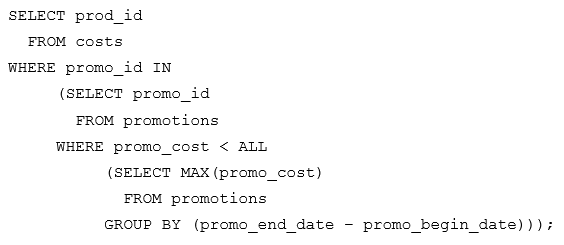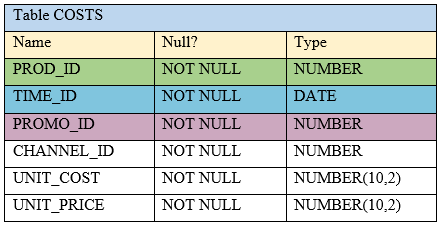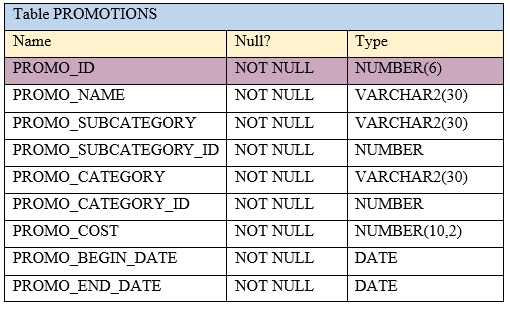
Expert Verified, Online, Free.

View the Exhibits and examine the structure of the COSTS and PROMOTIONS tables.
You want to display PROD_IDS whose promotion cost is less than the highest cost PROD_ID in a promotion time interval.
Examine this SQL statement:
Exhibit 1.
Exhibit 2.
What will be the result?
ioio
Highly Voted 3 years agoyukclam9
3 years agoNowOrNever
Highly Voted 3 years, 7 months agokaz40
Most Recent 5 months, 2 weeks agonautil2
6 months, 1 week agoLydia1054
9 months agoDarkseid1231
10 months agofthusa
11 months agoJ4vi
12 months agohadiwuu
1 year, 3 months agoZairlam
2 years, 1 month agoryuah
2 years, 3 months agoryuah
2 years, 3 months agoEIYA
2 years, 3 months agoogdru
3 years, 1 month agoFan
3 years, 1 month agoShakhzod1999
1 year, 2 months agoPhat
3 years, 3 months agosseet40
3 years, 3 months agomberrios
3 years, 6 months agoadoptc94
3 years, 7 months ago